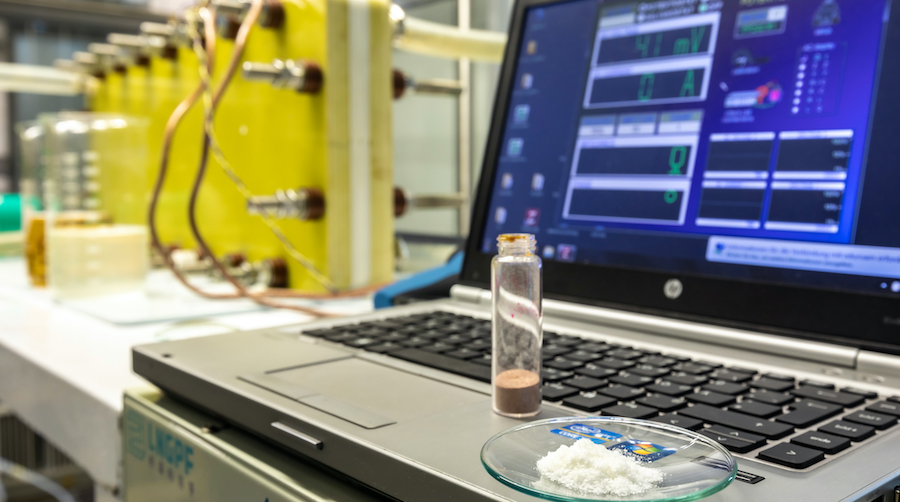Vanilla redox-flow batteries are now a thing

Researchers at Graz University of Technology in Austria have just made redox-flow batteries environmentally friendlier by replacing their core element, the liquid electrolyte, with vanillin, an important ingredient of Austrian vanilla croissants.
In a paper published in the journal Angewandte Chemie International Edition, the scientists explain that vanillin, a commonly used flavour compound, is one of the few fine-chemicals produced from lignin. Lignin, in turn, is generated as a waste product in paper production.
What the lead author of the study Stefan Spirk and his colleagues did was refine lignin into vanillin into a redox-active material using mild and green chemistry without the use of metal catalysts. The resulting substance has proven effective in flow batteries.
Redox flow technology is characterized by the storage of large amounts of energy and can therefore cushion voltage peaks in the power grid
According to Spirk, the process works at room temperature and can even be implemented with common household chemicals. However, the idea of using lignin allows for mass production as the compound is normally generated in large quantities.
Spirk has already patented the separation and refining process. Now, he and his team want to commercialize the technology, as they believe the process is highly scalable and suitable for continuous production.
“The plan is to hook up our plant to a pulp mill and isolate the vanillin from the lignin that is left over as waste,” Spirk said in a media statement. “Whatever is not needed can subsequently flow back into the regular cycle and be used energetically as usual. We are in concrete talks with Mondi AG, a leading global manufacturer of paper-based products, which is showing great interest in the technology.”
For the final implementation, the technology has to be tested in real operation. Thus, the researchers are now looking for energy supply companies that can integrate the redox flow technology into its infrastructure and relieve the burden on the grid.
“We can keep the value chain ranging from the procurement of raw materials and components to the generation of electricity on a regional basis, enable storage capacities of up to 800 hundreds of MWhmegawatt hours, relieve the strain on the electricity grid and make an important contribution to the green energy storage revolution,” Spirk said.
Redox flow technology is characterized by the storage of large amounts of energy and can therefore cushion voltage peaks in the power grid. The batteries are also suitable as backup storage for stationary applications such as power plants, remote operations, hospitals, mobile phone systems or e-fuelling stations.
{{ commodity.name }}
{{ post.title }}
{{ post.date }}

Comments